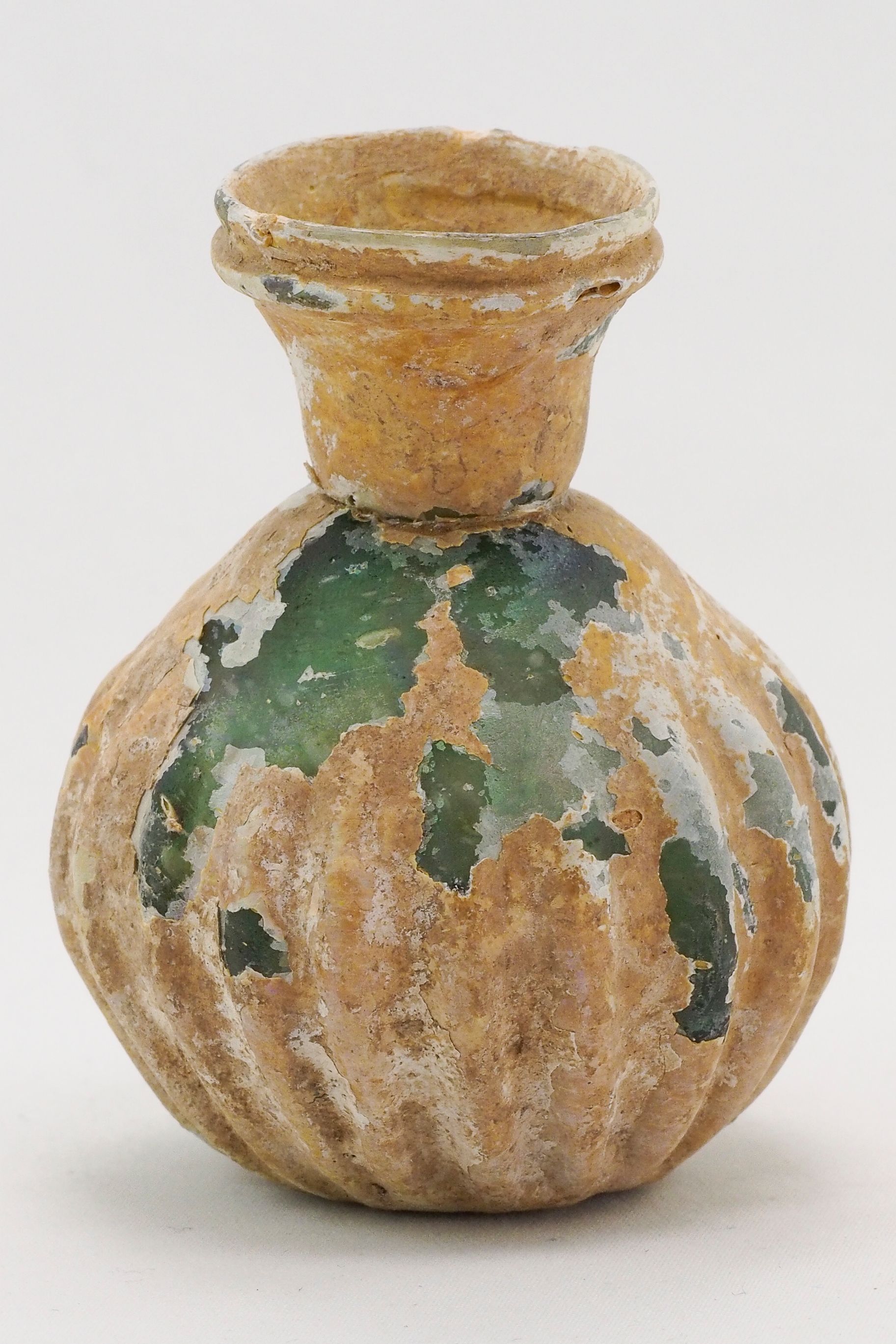Sprinkler
Name/Title
SprinklerEntry/Object ID
11NE-Mi8-146Description
The mouth is funneled with a rounded rim. A small flange was pinched horizontally at the midpoint of the rim. The neck has been reattached where it constricts at the junction with the body. At the internal junction of the neck and body is a thin diaphragm. The shoulders gently slope into a rounded body which is widest at its midsection. Uniform vertical ribs begin at the shoulder and end at the flat base. There is encrustation, iridescence, and an old collection label to the base.Use
Perfume VesselContext
Sprinkler vessels held perfume, oils, and other costly liquids. The neck of a sprinkler vessel is nearly fully closed as a diaphragm with a small central aperture sitting at the base of its neck. The small aperture allows the liquid contents within the bottle to be emptied drop by drop so the user could apply the liquid sparingly. Additionally, during the third century CE, sprinklers were typically small, compact globular bottles with geometric mold-blown patterns.Made/Created
Date made
200 CE - 400 CETime Period
Late AntiqueEthnography
Culture/Tribe
Near Eastern - Syro-Palestine

